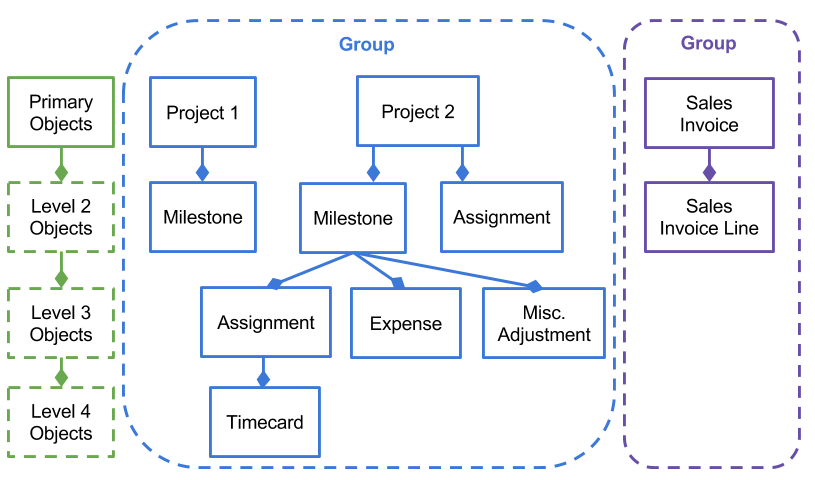A source object is an object (on your Salesforce organization) whose records you want to include in forecasting and recognition processes. For example, if you want to use PSA with Revenue Management, your source objects might include Project and Milestone.
You can have one or more primary source objects, and up to three additional levels of related source objects. The primary objects and related source objects must be in a master-detail or lookup relationship in your organization. Revenue Management users must have at least read access to the source objects.
Revenue Management needs to access data about the source records, such as when a project starts, when it ends, and how much revenue is involved. To give Revenue Management access to this data, your administrator creates mappings to fields on the source objects. Revenue Management stores these mappings and relationships in recognition settings records.
In a simple PSA example, the primary object could be Project and the Level 2 source object could be Milestone, but more complex hierarchies are also possible as shown here.

All recognition settings records that have the same source object at primary level form a group or recognition stream, as shown in the diagram above.
Understanding Recognition Settings and Templates for your Source Objects
You must create a recognition settings record for each source object A self-contained source entity that consists of both data and rules for transforming the data. in your organization, but you only need to create recognition templates for the source objects you want to include in forecasting and recognition processes.
A self-contained source entity that consists of both data and rules for transforming the data. in your organization, but you only need to create recognition templates for the source objects you want to include in forecasting and recognition processes.
For example, if your source objects are PSA's Project (Primary object), Milestone (Level 2 object), Assignment (Level 3 object) and Timecard (Level 4 object), you must create a recognition settings record for each one. But if you are only going to recognize revenue and cost on timecards, you only need to create a recognition template for timecards and associate it with the Timecard settings record.
See About Recognition Settings Records and What is a Recognition Template? for more information.